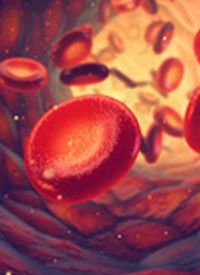Article
Hyper-CVAD Plus Sequential Blinatumomab With or Without Inotuzumab Elicits Clinical Benefit in Ph-Negative B-Cell ALL
Author(s):
Sequential administration of blinatumomab with or without inotuzumab following hyper-CVAD elicited high rates of minimal residual disease negativity and a durable overall survival benefit among patients with Philadelphia chromosome-negative B-cell acute lymphoblastic lymphoma.

Sequential administration of blinatumomab (Blincyto) with or without inotuzumab (Besponsa) following hyper-CVAD elicited high rates of minimal residual disease (MRD) negativity and a durable overall survival (OS) benefit among patients with Philadelphia chromosome (Ph)-negative B-cell acute lymphoblastic lymphoma (ALL), according to results from a phase 1/2 study (NCT01371630) presented at the 2022 ASCO Annual Meeting.1
Among all treated patients who received hyper-fractionated regimen of cyclophosphamide, vincristine sulfate, doxorubicin hydrochloride, and dexamethasone (hyper-CVAD) plus sequential blinatumomab with or without inotuzumab (n = 58) the MRD negativity rate was 95%. The 3-year OS rate among these patients was 84%.
Further, the efficacy findings show no relapses among patients without baseline high-risk features, and no relapses were observed beyond 2 years.
When stratified according to inotuzumab therapy, among those who received the additional treatment (n = 20) the MRD negativity rate was 90% compared with 97% among those who received sequential blinatumomab only (n = 38). The 1-year OS rates for these groups were 100% and 87%, respectively.
Outcomes with standard therapy for ALL include a long-term OS rate between 40% and 50% and a complete response (CR) rate between 80% and 90%. In comparison with chemotherapy, investigators know that blinatumomab plus inotuzumab has higher rates of MRD eradication, and by adding the combination to hyper-CVAD, it was hypothesized that patients would experience higher efficacy and rates of remission with less myelosuppression.
Fifty-eight patients with newly diagnosed Ph-negative B-cell ALL aged 14 to 59 years were enrolled in the study. The protocol allowed for prior treatment with no more than 1 cycle of induction chemotherapy. Patients were required to be eligible for intensive chemotherapy, have an ECOG performance status of 3 or less, adequate organ function defined as bilirubin 2 mg/dL or lower, and creatinine 2 mg/dL or lower. Patients were not permitted to have significant central nervous system pathology.
At baseline, the population had a median age of 34 years (range, 17-59), and the majority (81%) had an ECOG performance score of 0 or 1. The median baseline white blood cell count was 4.1 x 109/L (range, 0.5-553). CNS involvement at the time of diagnosis was observed in 10% of the study population. Fifty-five percent of patients had a CD20 expression of at least 20% and 98% had CD19 expression of at least 50%.
In terms of karyotype, diploid was most commonly identified (31%), followed by low hypodiploidy/near triploidy (14%), KMT2A rearrangement (9%) complex (7%), and high hyperdiploidy (7%). Thirty-three percent of patients had other karyotypes.
According to cytometry, 19% of patients in the study were CRLF2-positive. Also, 26% of patients tested positive for a TP53 mutation and 8% were positive for a JAK2 mutation.
Treatment in the intensive phase lasted for 4 weeks of therapy. Patients were treated with ofatumumab (Kesimpta) or rituximab (Rituxan) twice per week with hyper-CVAD, methotrexate plus 8 doses of cytarabine. Following the intensive phase, patients received blinatumomab on weeks 2 and 4. In the maintenance phase, patients received 6 doses of mercaptopurine plus vincristine, methotrexate, and prednisone (POMP) on days 1 to 3, 5 to 7, 9 to 11, and 13 to 15. Additionally, patients were treated with blinatumomab on days 4, 8, and 12 during the maintenance phase, and inotuzumab was administered at 0.3 mg/m2 on days 1 and 8.
After induction, CRs were observed in 80% of patients overall. The CR rate in patients treated with hyper-CVAD plus blinatumomab was 81% compared with 77% among patients treated with hyper-CVAD with sequential blinatumomab plus inotuzumab. MRD negativity after induction was observed in 76% of patients overall. The hyper-CVAD plus blinatumomab arm has a CR rate of 85% after induction vs 63% in the hyper-CVAD with sequential blinatumomab plus inotuzumab group.
The CR at any time was 100% in the overall population as well as in each treatment arm. MRD negativity at any time was 95% overall and 97% for the hyper-CVAD plus blinatumomab compared with 63% in the other treatment arm.
The 30-day mortality was 3% in the overall population, with all deaths occurring in the hyper-CVAD plus blinatumomab arm.
Median follow-up was 34 months (range, 16-61) in the hyper-CVAD plus blinatumomab arm. Of the 38 patients who achieved a CR in the hyper-CVAD plus blinatumomab arm, 5 patients had relapsed disease, 3 died, 13 went on to transplant, and 18 had ongoing CRs at the time of data cutoff.
Among patients treated with hyper-CVAD plus blinatumomab and inotuzumab, the median follow-up was 6 months (range, 3-14). Among the 20 patients who achieved a CR with the regimen, 5 went on to transplant and 15 had ongoing CRs at the time of data cutoff.
Only 1 patient in the study discontinued treatment with blinatumomab as a result of recurrent grade 2 neurotoxicity. There were no patients who discontinued inotuzumab due to adverse events, and no cases of hepatic veno-occlusive disease were observed.
Reference
Short NJ, Kantarjian H, Ravandi F, et al. A phase II study of hyper-CVAD with sequential blinatumomab (Blina), with or without inotuzumab ozogamicin (INO), in adults with newly diagnosed B-cell acute lymphoblastic leukemia (ALL). J Clin Oncol. 2022; 40(suppl 16):7034. doi:10.1200/JCO.2022.40.16_suppl.7034








